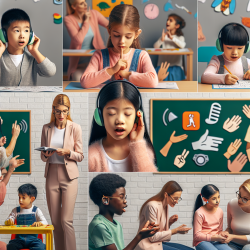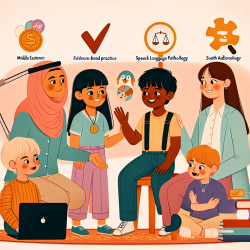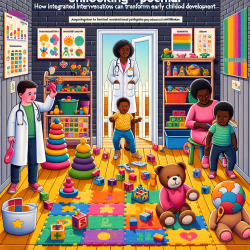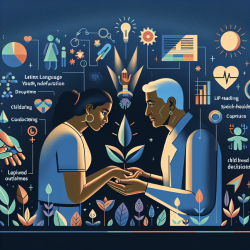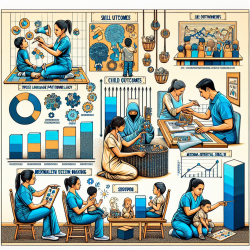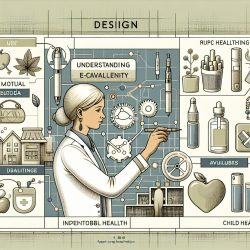The challenge of diagnosing and treating central auditory disorders in children and adolescents with brain injuries is a complex but crucial aspect of special education and therapeutic interventions. The research article, Troubles auditifs centraux chez des enfants et adolescents cerebroleses: evaluations audiologiques effectuees a partir d'epreuves non verbales et de l'adaptation francaise d'epreuves verbales, provides invaluable insights into the auditory capabilities of this demographic using nonverbal tests and French-language adaptations of verbal tests.
This blog aims to distill the research findings into actionable strategies for practitioners, enhancing their skills in identifying and addressing central auditory disorders in brain-injured children and adolescents. By implementing outcomes from this research or delving further into the topic, practitioners can significantly improve the auditory processing capabilities of their clients.
Understanding Central Auditory Disorders
Central auditory disorders (CAD) are deficiencies in one or more behaviors related to the central auditory processes. These processes include sound localization and lateralization, auditory discrimination, pattern recognition, temporal aspects of audition (temporal resolution, masking, integration, and ordering), and understanding degraded or competing acoustic signals. CAD can significantly impact a child's language development, learning abilities, and overall quality of life.
Insights from the Research
The study presented in the article assessed the auditory abilities of individuals who had experienced brain injury or stroke and exhibited signs of CAD. Using both nonverbal tests and French-language adaptations of verbal tests, the researchers were able to identify auditory disabilities specific to the site of cortical or subcortical lesions. The adaptation of the Staggered Spondaic Word (SSW) test for verbal messages, in particular, allowed for the identification of auditory disabilities linked to specific lesion sites, as previously reported by Katz (1978, 1992).
Practical Applications for Practitioners
- Adopting Nonverbal and Adapted Verbal Tests: Incorporating nonverbal tests and adapted verbal tests, like the French adaptation of the SSW test, into assessment protocols can enhance the detection of CAD in brain-injured children and adolescents. These tools are especially useful in identifying site-specific auditory processing issues.
- Individualized Therapy Plans: Understanding the specific nature of a child's auditory processing disorder allows for more tailored therapeutic interventions. For instance, if a child demonstrates difficulties with temporal aspects of audition, therapy can focus on improving these specific skills.
- Interdisciplinary Collaboration: The research underscores the importance of interdisciplinary collaboration in diagnosing and treating CAD. Audiologists, speech-language pathologists, neurologists, and educators can work together to create comprehensive care plans that address both the auditory and cognitive needs of the child.
- Parental and Educator Training: Educating parents and teachers about the manifestations of CAD and how they can support the child's auditory processing skills at home and in the classroom is crucial. Simple strategies, such as speaking clearly and at a slightly slower pace, can make a significant difference in the child's understanding and processing of auditory information.
Encouraging Further Research and Professional Development
The complexities of CAD in brain-injured children and adolescents necessitate ongoing research and professional development. Practitioners are encouraged to stay abreast of the latest research findings, participate in workshops and training sessions focused on CAD, and contribute to the growing body of knowledge through their own clinical experiences and studies.
In conclusion, the insights provided by Troubles auditifs centraux chez des enfants et adolescents cerebroleses: evaluations audiologiques effectuees a partir d'epreuves non verbales et de l'adaptation francaise d'epreuves verbales offer valuable guidance for practitioners working with brain-injured children and adolescents. By integrating these findings into practice, clinicians can enhance their ability to diagnose and treat CAD, ultimately improving the auditory processing capabilities and quality of life for this vulnerable population.
To read the original research paper, please follow this link: Troubles auditifs centraux chez des enfants et adolescents cerebroleses: evaluations audiologiques effectuees a partir d'epreuves non verbales et de l'adaptation francaise d'epreuves verbales.
